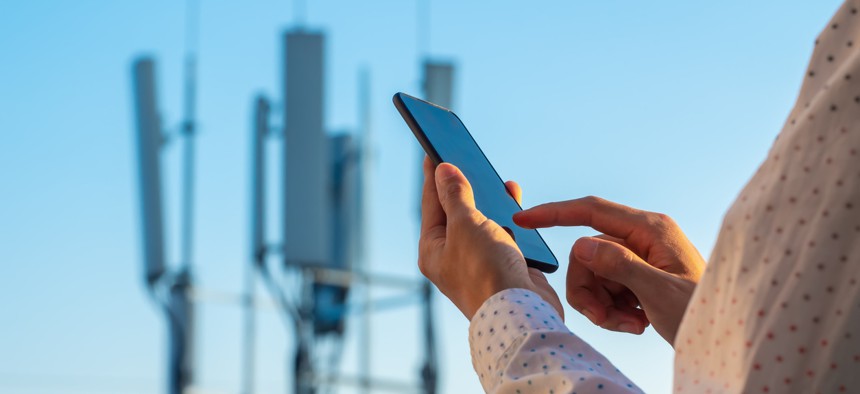sponsor content What's this?
Innovation at the Frontlines: How Public Safety Agencies Can Embrace the 5G Revolution

iStock/xijian
Presented by
Verizon 4.29.21

What will it take for public safety leaders to successfully integrate 5G technology into their existing workflows? At a recent roundtable discussion, experts across government, industry and academia helped answer this question.
5G has emerged as a key technological innovation reshaping how communities and organizations operate. From delivering high-speed broadband data services and applications to enabling how critical information can be used and shared by teams, public safety agencies are particularly well-positioned to benefit from the fifth-generation technology standard. After all, first responders, by nature of their jobs, must make quick and accurate decisions — and they need the fastest connectivity services to help them keep the public out of harm’s way.
But what will it take for public safety leaders to successfully adopt and integrate 5G technology into their existing workflows? At a recent roundtable discussion, sponsored by Verizon and produced by GovExec, experts across government, industry and academia helped answer this question. Below are a few takeaways from the conversation.
Expand 5G Footprint Beyond Dense Metro Areas
According to a report from Brookings, 55 million Americans lack access to broadband connection, and 14 million of these people live in rural communities. Narrowing the digital divide, however, will come at a cost. To power 98% of the U.S. with high-speed, broadband internet will cost the Federal Communications Commission $40 billion.
“Our biggest problem here is going to be cost — there’s no question about it,” said David Nash, the ESF-2 lead coordinator for the Lexington-Fayette County of Emergency Management in Kentucky.
While the state has begun rolling out 5G in larger cities like Lexington and Louisville, its rural communities are falling behind, he noted. That includes first responders who might not have the connectivity they need to do their jobs efficiently.
To help address this gap, Verizon has invested more than $50 billion into expanding C-band spectrum nationwide, said John Harris, executive director of federal civilian at Verizon Business.
“It's not the full-blown, Ultra-wideband, really high millimeter wave spectrum, but it's the mid-band that will now help us to propagate the service even further into rural America and provide deeper . . . bandwidth capabilities, higher throughputs,” he said.
It’s a step forward for broadband service in rural communities, Harris noted.
Verizon has also forged a partnership with Amazon’s Project Kuiper to develop and deploy a range of connectivity services for customers in rural and remote locations.
“This is a low-Earth orbit satellite partnership in which we can potentially leverage even some of that infrastructure to provide backhaul and services and emergency response to be able to get to even further . . . parts of rural America or places where there's not traditional cellular coverage,” Harris said.
Integrate Resilience, Reliability into your 5G Adoption Strategy
The last few years have taught us disaster can strike anywhere, at any time. Whether it’s a ransomware attack, a global pandemic or a hurricane, 5G networks must be able to handle unforeseen events.
Harris reiterated the importance of incorporating a backup generator with built-in resilience into the infrastructure to prevent an outage from happening “at the worst possible time.”
Resilient and reliable systems aren’t just value-adds for first responders — they are critical to citizens’ health and safety.
Patrick Mallon, assistant director of public safety communications for the state of California, said these characteristics are vital ingredients of a successful 5G adoption strategy. He says he looks for “ . . . anything that will improve the reliability and the speed of situational awareness . . . being able to integrate really up-to-date weather information.”
Mallon also keeps an eye out for systems that can overlap, often referred to as “redundancy.”
“[With 4G], there is some overlapping coverage, so that if you do lose a site . . . the surrounding sites should be able to fill in for coverage,” he said.
This article is part of GovExec’s “5G on the Frontlines” series, produced by GovExec in collaboration with Verizon. Click on the links below for more takeaways from this discussion.
Innovations in Public Safety: How Agencies Can Secure their 5G Networks
Connectivity First: Public Safety Agencies Embrace a 5G Future
This content is made possible by our sponsor, Verizon; it is not written by and does not necessarily reflect the views of the editorial staff.
NEXT STORY: How 5G Will Shape the Future of Public Safety





